15 Ng. 100 Đ. Nguyễn Xiển, Thanh Xuân Nam, Thanh Xuân, Hà Nội 100000
When one conjures images of Cambodia's legendary Angkor temples, the meticulously restored grandeur of Angkor Wat or the enigmatic smiles of the Bayon often come to mind. Yet, for the intrepid traveler seeking a truly authentic, wild, and deeply evocative encounter with ancient Khmer civilization, a journey to Beng Mealea offers an unparalleled experience. Located approximately 60-70 kilometers east of Siem Reap, this sprawling Hindu temple is not just another ruin; it is a monument consumed by the very jungle that once hid it from the world, a colossal, chaotic masterpiece largely left untouched by the hand of extensive restoration.
Beng Mealea is a labyrinth of crumbling sandstone blocks, moss-covered walls, and giant strangler fig roots that grasp and entwine with the ancient structures, creating a landscape of haunting beauty and raw power. It is a place where nature has undeniably claimed supremacy, transforming a once-magnificent temple into a breathtaking testament to the relentless force of the tropical forest. For explorers, photographers, and anyone yearning for a profound sense of discovery, Beng Mealea offers a visceral, almost Indiana Jones-esque adventure into a truly "lost temple," a powerful contrast to its more famous and manicured counterparts within the Angkor Archaeological Park. It holds secrets of an ambitious king, a forgotten royal road, and a spiritual heart that still whispers amidst the verdant embrace of the wilderness.
In this comprehensive guide, we will embark on an immersive exploration of Beng Mealea. We'll delve into its fascinating history, its remarkable architectural connections to Angkor Wat, and the unique allure of its unrestored, wild state. Furthermore, we’ll provide you with all the practical information you need to plan your expedition, including how Golden Trail Travel can seamlessly facilitate your discovery of this captivating and adventurous Cambodian treasure, ensuring a journey that is both insightful and truly unforgettable.
Beng Mealea's history is as mysterious and captivating as its current state of ruin. Built by one of the greatest Khmer kings, it shares a profound connection with Angkor Wat, yet it remains largely shrouded in the embrace of the jungle, offering more questions than definitive answers.
Beng Mealea was constructed in the early 12th century, likely during the reign of King Suryavarman II (c. 1113–1150 CE). This illustrious monarch is renowned as the builder of Angkor Wat, the pinnacle of Khmer architecture and the largest religious monument in the world.
Contemporaneous Construction: The architectural style of Beng Mealea is almost identical to that of Angkor Wat, leading scholars to believe it was built around the same time, possibly even as a prototype or a grand blueprint for the larger, more famous temple. Its scale is immense, suggesting it was once a temple of paramount importance.
Hindu Dedication: Like Angkor Wat, Beng Mealea was built as a Hindu temple, most likely dedicated to Vishnu, the preserver god, though the absence of definitive foundational stelae or comprehensive inscriptions leaves its exact dedication somewhat debated. The prevailing iconography, however, strongly suggests a Vaishnavite affiliation.
A "Mountain Temple" (Prasat): In the Khmer tradition, temples were often conceived as "temple-mountains" (prasat), symbolizing Mount Meru, the mythical home of the gods in Hindu and Buddhist cosmology. Beng Mealea, despite being built on a relatively flat plain, adheres to this cosmological layout with its concentric galleries leading to a central sanctuary.
Beng Mealea's location, approximately 60-70 kilometers east-northeast of the main Angkor complex, was not arbitrary. It played a significant strategic and logistical role within the Khmer Empire.
Royal Road to Koh Ker: The temple was situated on one of the great royal roads that connected Angkor to Koh Ker, another significant and short-lived capital of the Khmer Empire (pre-dating Suryavarman II, but used for transport). This road would have been a vital artery for trade, communication, and military movements, highlighting Beng Mealea's importance as a major waystation, spiritual center, and perhaps even a fort or administrative outpost.
Resource Hub: The region around Beng Mealea was rich in laterite quarries and forest resources, which would have been crucial for the vast construction projects across the empire.
Unlike many temples within the main Angkor complex that saw centuries of continuous use and gradual decline, Beng Mealea appears to have been abandoned relatively early, possibly even before its completion, or shortly after.
Lack of Inscriptions: The scarcity of detailed inscriptions at Beng Mealea, especially compared to the richly documented Angkor Wat, contributes to its enigmatic past. It provides fewer clues about its exact purpose, its patron, or the reasons for its abandonment.
Possible Unfinished State: Some theories suggest that the temple might have been left unfinished due to political instability, the death of Suryavarman II, or resource reallocation to Angkor Wat. Evidence like unfinished carvings supports this idea.
Swift Reclaimation: Whatever the reason for its abandonment, Beng Mealea was quickly and decisively consumed by the tropical jungle. The relentless growth of strangler figs, silk-cotton trees, and other tropical vegetation wrapped their powerful roots around the stone, exerting immense pressure that led to widespread collapse. The high rainfall and tropical climate further accelerated the decay.
The "Lost Temple" Aura: This rapid and comprehensive engulfment by nature is precisely what gives Beng Mealea its unique "lost temple" aura today. It was a site that remained largely hidden and forgotten for centuries, only re-emerging into public consciousness relatively recently, making a visit here feel like a true expedition into an uncharted past.
Beng Mealea stands as a monument of grand ambition, a testament to the might of the Khmer Empire, yet one that yields its secrets grudgingly, inviting visitors to piece together its story from the beautiful chaos of its ruins.
The defining characteristic of Beng Mealea is its dramatic state of ruin, where massive sandstone blocks lie scattered in chaotic piles, and the pervasive roots of giant trees have become an integral part of its very fabric. Despite this, its underlying architectural brilliance, mirroring that of Angkor Wat, is still discernible.
Beng Mealea is perhaps the most completely "lost" and unrestored of the major Angkorian temples. It is not a place of neatly aligned pathways and rebuilt structures; instead, it's a monumental jigsaw puzzle of fallen stone.
Overwhelming Collapse: The temple has largely collapsed into a vast heap of intricately carved sandstone blocks. Walls have crumbled, roofs have caved in, and pillars lie broken. This extensive state of ruin is a direct result of both the sheer force of the jungle and, perhaps, the rapid abandonment of the site.
No Extensive Restoration: Unlike many other temples in the Angkor Archaeological Park, Beng Mealea has seen minimal restoration efforts. The deliberate choice to leave it in its current state preserves its unique charm as a temple reclaimed by nature, allowing visitors to experience it much as early explorers would have.
Despite the devastation, Beng Mealea's underlying blueprint is clearly visible, showcasing the classic Khmer concentric gallery plan, strongly influenced by the Angkor Wat style.
Three Concentric Galleries: The temple is organized into three distinct concentric enclosures, each marked by a gallery, leading inwards to a central sanctuary. These galleries, though mostly collapsed, would have originally provided covered walkways around the temple.
Cruciform Plan: Like Angkor Wat, the layout is cruciform (cross-shaped), particularly evident in the central galleries and surrounding courtyards. This geometric precision, even in ruin, speaks to the sophisticated planning of the Khmer architects.
Main Entrances (Gopuras): Grand gopuras (entrance pavilions) mark the cardinal points, particularly the east and south, which would have been the main ceremonial entry points. These are often in a state of advanced decay but still hint at their former majesty.
Causeways and Naga Balustrades: Long, elevated causeways, often flanked by multi-headed naga (serpent) balustrades, lead to the gopuras, spanning what were once wide moats. These moats (now largely dry and overgrown) would have symbolized the cosmic ocean surrounding Mount Meru.
Libraries and Subsidiary Buildings: Within the various enclosures, the remnants of "libraries" (smaller, separate buildings often found in Khmer temples, likely used for storing sacred texts) and other subsidiary structures can be identified.
The most captivating and iconic feature of Beng Mealea is the dramatic and pervasive integration of nature with architecture. Here, the jungle is not just encroaching; it is an active participant in shaping the temple's aesthetics.
Strangler Figs and Silk-Cotton Trees: Massive strangler fig trees (often starting as epiphytes on the temple walls) and towering silk-cotton trees (kapok trees) have taken root on, around, and within the structures. Their gargantuan roots snake over lintels, pry apart walls, and penetrate foundations, creating a powerful and often destructive embrace.
Roots as Walls: In many instances, the roots themselves form "walls" or "gateways," holding together sections of the temple that would otherwise have completely collapsed. They are both agents of destruction and paradoxical stabilizers, creating an almost living architecture.
Organic Sculptures: The way the roots intertwine with the carved stone creates breathtaking organic sculptures. You'll see roots flowing down walls like molten lava, others gripping columns like giant tentacles, and some forming natural bridges over gaps in the rubble. Each vista is a unique, unrepeatable work of art created by time and nature.
Moss and Lichen: The damp, tropical climate ensures that most of the exposed stone is covered in a verdant blanket of moss, lichen, and small ferns, adding to the temple's ancient, time-worn appearance and its rich, earthy palette of greens and greys.
While not as extensively adorned with carvings as Angkor Wat, Beng Mealea still holds glimpses of its original artistic brilliance, often requiring a keen eye and a sense of discovery.
Hindu Mythology: Surviving bas-reliefs depict scenes from Hindu mythology, particularly from the Ramayana and Mahabharata epics. You might find depictions of Vishnu, Garuda (the mythical bird mount of Vishnu), celestial dancers (apsaras), and various deities.
Vishnu in Repose: Fragments of carvings showing Vishnu reclining on the cosmic serpent Ananta can be found, linking back to its likely dedication to Vishnu.
Sense of Discovery: Many of the carvings are weathered, partially buried, or obscured by roots and foliage, making the act of discovering a clear relief a rewarding experience. It adds to the feeling of exploring a truly lost site.
Beng Mealea is a powerful testament to both the ambition of the Khmer Empire and the humbling force of nature. Its beauty lies not in perfection, but in its sublime state of decay, inviting visitors to witness a monumental struggle between stone and jungle.
Visiting Beng Mealea is far from a passive experience; it's an active expedition that engages all your senses, offering a raw, visceral connection to ancient history and untamed nature.
The defining aspect of the Beng Mealea experience is its adventurous, almost intrepid, nature.
Off-Path Exploration (with Caution): For many years, Beng Mealea was a true wilderness temple, requiring visitors to clamber over collapsed blocks, squeeze through narrow passages, and navigate their own way through the ruins. This created an exhilarating sense of discovery, though it also came with safety risks.
The Wooden Walkways (The New Adventure): In recent years, particularly for the filming of the movie Two Brothers (2004) and subsequent tourism development, a network of elevated wooden walkways and platforms has been installed throughout much of the temple. These walkways make Beng Mealea significantly more accessible and safer for a wider range of visitors, allowing for a comprehensive tour without extreme clambering.
Still a Sense of Adventure: While the walkways guide you, they do not diminish the temple's raw power. You are still walking above and through the ruins, with tantalizing glimpses of fallen sections and tree roots below. Some areas still allow for a bit of adventurous, supervised off-path exploration, adding to the thrill. The sheer scale of the collapsed stone and the dense jungle canopy still create an immersive, wild atmosphere.
Hidden Corners: Despite the walkways, the temple is so vast and intricate that finding quiet, seemingly "undiscovered" corners is still possible, where you can feel truly alone with the ancient stones and the sounds of the jungle.
Beng Mealea is arguably the most photogenic of all the Angkorian temples for those who love dynamic interplay between human architecture and natural elements.
Iconic Tree-Stone Shots: The gigantic strangler figs and silk-cotton trees, with their roots flowing over and through the stone, provide endless opportunities for dramatic and artistic compositions. Every angle reveals a new, powerful embrace between nature and man-made structures.
Light and Shadow: The partial collapse of roofs allows shafts of sunlight to filter into the dark interior spaces, creating stunning contrasts of light and shadow that highlight textures, moss, and hidden details. Early morning or late afternoon light (the "golden hour") is particularly magical here.
Ethereal Ambiance: The overall ambiance of the temple—its quietude, its pervasive green, and the sheer scale of the ruins—lends itself to capturing evocative and ethereal photographs that tell a story of time, decay, and beauty.
Detail Shots: Beyond the grand vistas, the intricate details of roots, moss, and surviving carvings offer opportunities for captivating close-up shots.
Unlike the bustling main temples of Angkor, Beng Mealea, due to its distance, often offers a more tranquil and auditory immersive experience.
Sounds of Nature: The primary sounds you'll hear are the calls of birds, the chirping of cicadas, the rustling of leaves in the breeze, and perhaps the distant hoot of a gibbon. The human chatter is significantly diminished, allowing for a deeper connection with the environment.
A Sense of Solitude: While it is a popular destination, the vastness of Beng Mealea means it's usually possible to find moments of solitude, particularly if you arrive early or stay later. This allows for a more personal and reflective experience.
Awe and Contemplation: The sheer scale of the collapsed temple, combined with the overwhelming force of nature, inspires a deep sense of awe and wonder. It invites contemplation on the impermanence of human creations and the enduring power of the natural world.
A visit to Beng Mealea is not just a sightseeing tour; it's an adventure that awakens the senses, a journey into a forgotten past, and a powerful encounter with the sublime beauty of a temple reclaimed by the wild. It leaves an indelible impression on all who wander its ancient, overgrown pathways.
Beng Mealea's unique charm lies in its largely unrestored state, but this also presents significant challenges for its long-term preservation. Balancing the desire to maintain its "wild" appeal with the need for structural stability and visitor safety is a delicate act.
Unlike the extensive reconstruction efforts seen at temples like Angkor Wat or the meticulous anastylosis at Baphuon, the approach at Beng Mealea has largely been one of minimal intervention.
Respecting Natural Decay: The primary philosophy for Beng Mealea has been to respect its natural decay and the unique aesthetic created by the jungle's embrace. The goal is not to rebuild it to its original form but to preserve its character as a "lost temple" reclaimed by nature.
Stabilization for Safety: However, some stabilization work has been necessary to ensure visitor safety and prevent catastrophic collapse of particularly precarious sections. This involves reinforcing foundations, supporting crumbling walls, and carefully managing the impact of tree roots without completely removing them. This work is often carried out by the APSARA Authority (the Cambodian governmental body responsible for managing the Angkor complex) in collaboration with international partners.
Wooden Walkways for Accessibility and Protection: The installation of raised wooden walkways is a key component of the current conservation strategy. These walkways serve a dual purpose:
Visitor Safety: They allow visitors to explore the complex without having to climb over unstable rubble, significantly reducing the risk of accidents.
Temple Protection: By directing visitor traffic, they prevent damage to fragile stones, moss, and roots that would otherwise be trampled by countless footsteps. This allows the temple to "rest" while still being accessible.
A significant and crucial conservation effort at Beng Mealea involved demining, making it safe for visitors and conservationists alike.
Landmine Contamination: Due to its remote location and its use by various factions during Cambodia's civil war and the Khmer Rouge era, Beng Mealea was heavily contaminated with landmines. For many years, this made exploration extremely dangerous.
Successful Demining: Extensive demining efforts by organizations like the Cambodian Mine Action Centre (CMAC) were successfully completed, rendering the area safe for tourists and allowing for the development of visitor infrastructure. This heroic work is a silent but vital part of Beng Mealea's accessibility today.
Despite the successes, the preservation of Beng Mealea remains an ongoing challenge:
The Force of Nature: The tropical climate and the relentless growth of vegetation continue to exert immense pressure on the structures. Managing these natural forces requires constant monitoring and intervention.
Water Damage: Monsoon rains contribute to erosion and water ingress, further weakening the foundations and masonry.
Funding and Resources: Like all large-scale conservation projects, securing consistent funding and resources for maintenance and ongoing stabilization is a perpetual challenge.
Balancing Tourism and Preservation: As Beng Mealea's popularity grows, managing visitor impact while preserving its fragile state requires careful planning and enforcement of park regulations.
The approach at Beng Mealea is a powerful example of how conservation can adapt to the unique character of a site, allowing its "wild" beauty to endure while ensuring its long-term survival for future generations to marvel at. It is a testament to the dedication of those working to protect Cambodia's invaluable heritage.
Embarking on a journey to Beng Mealea requires careful planning due to its location outside the main Angkor complex, but the rewards are immeasurable.
Distance from Siem Reap: Beng Mealea is approximately 60 to 70 kilometers (37 to 43 miles) east-northeast of Siem Reap. This makes it a full half-day or even a full-day trip when combined with other sites.
Getting There:
Private Car/Taxi: This is the most recommended and comfortable option. The journey takes about 1.5 to 2 hours each way, depending on traffic and road conditions. A private car offers air conditioning and flexibility.
Tuk-tuk: While possible and more budget-friendly, a tuk-tuk ride over this distance can be long, dusty (in dry season), and hot. It takes longer (around 2-2.5 hours each way). Ensure your tuk-tuk driver is experienced with the route.
Tour Group: Many tour operators in Siem Reap offer Beng Mealea tours, often combining it with other sites like Koh Ker or Phnom Kulen. This is a convenient option.
Road Conditions: The road to Beng Mealea is generally well-paved, making the journey relatively smooth, especially by car.
Integrated with Angkor Pass: As of late 2020 (and confirmed by current information), Beng Mealea is now included in the standard Angkor Pass. This means you do not need a separate ticket if you have a valid 1-day, 3-day, or 7-day Angkor Pass. Previously, it required a separate entry ticket, so this is a significant change simplifying visits. Purchase your pass at the official Angkor Enterprise ticket office in Siem Reap.
Early Morning: Highly recommended. Arrive as close to opening time as possible (usually 7:00 AM) to experience the temple in cooler temperatures, with fewer crowds, and the magical soft light that enhances photography.
Late Afternoon: Also a good option for beautiful light as the sun begins to set, but ensure you leave ample time for exploration before closing.
Dry Season (November to May): This period offers the most comfortable weather for exploration – less humidity, no rain, and generally clearer skies. The paths are also less muddy.
Wet Season (June to October): While it brings rain, the wet season makes the jungle incredibly lush and vibrant, enhancing the "reclaimed by nature" aesthetic. It can also mean fewer tourists. Be prepared for potential muddy sections.
At the Site: Allocate at least 2 to 3 hours to explore Beng Mealea thoroughly. This allows time to navigate the walkways, absorb the atmosphere, and find various vantage points for photography. Don't rush; it's a place to linger and discover.
Total Trip from Siem Reap: A dedicated trip to Beng Mealea typically takes 4 to 6 hours return, including travel time and exploration.
Sturdy Footwear is Crucial: Even with the wooden walkways, you will be walking on uneven surfaces, stairs, and potentially some exposed roots. Wear comfortable, closed-toe walking shoes or hiking sandals with good grip.
Sun Protection: Bring a wide-brimmed hat, sunglasses, and high-SPF sunscreen. Much of the temple is shaded, but sections are exposed.
Hydration: Carry plenty of bottled water. The humidity and walking can be dehydrating.
Insect Repellent: Given its deep jungle setting, insect repellent is highly advisable, especially during early morning or late afternoon visits.
Photography Gear: Extra batteries, memory cards, and a wide-angle lens are recommended for capturing the scale and the interplay of roots and stone.
Guide (Optional but Recommended): While you can explore independently using the walkways, a local, licensed guide (can be arranged through your tour operator or at the site) can greatly enhance your visit by providing historical context, pointing out hidden carvings, and navigating you to the best viewpoints.
Respect the Ruins: Stick to designated paths and walkways. Do not climb on fragile structures or carvings. Do not litter. Help preserve this magnificent site.
Physical Fitness: While the walkways make it much more accessible, some basic level of mobility is still recommended for comfortably navigating the site.
Given its distance, Beng Mealea is often combined with other sites for a full-day adventure:
Koh Ker: This is a popular combination. Koh Ker was a brief capital of the Khmer Empire, known for its unique seven-tiered pyramid temple, Prasat Thom. It's further north from Beng Mealea.
Phnom Kulen National Park: Home to the "River of a Thousand Lingas," a large reclining Buddha statue, and waterfalls, Phnom Kulen offers a mix of cultural and natural beauty. It's often combined with Beng Mealea.
Floating Villages (Kompong Phluk or Kompong Khleang): These can be added to a Beng Mealea trip, especially Kompong Khleang which is further out and offers a more authentic experience than Kompong Phluk. This creates a diverse day of temples, nature, and unique local life.
A well-planned expedition to Beng Mealea promises an unparalleled adventure, transporting you to a realm where ancient history and untamed nature intertwine in a symphony of breathtaking beauty and profound mystery.
For an effortless, enriching, and truly adventurous exploration of Beng Mealea Temple and its surrounding wonders, Golden Trail Travel is your ideal partner. We specialize in crafting bespoke Cambodian adventures that delve beyond the well-trodden paths, ensuring you experience the country's most compelling historical sites and natural landscapes with unparalleled comfort, profound insight, and unwavering commitment to responsible tourism.
Golden Trail Travel possesses an in-depth understanding of Beng Mealea's unique allure and the logistical intricacies of reaching this magnificent, remote temple. Our meticulously planned tours handle all aspects, from comfortable, air-conditioned transportation directly from your accommodation in Siem Reap to securing your Angkor Pass (if applicable) and providing access to expert local guides. Our guides illuminate the temple's fascinating history, navigate its wild labyrinth, and help you discover its hidden artistic treasures safely and respectfully. We prioritize authentic, adventurous experiences, ethical tourism practices, and your absolute comfort and safety.
Why choose Golden Trail Travel for your Beng Mealea expedition?
Expertly Designed Adventure Itineraries: We craft tours that seamlessly integrate Beng Mealea, often combining it with other remote gems like Koh Ker or the natural beauty of Phnom Kulen, creating a comprehensive and exhilarating full-day adventure. Our schedules are optimized to ensure you explore Beng Mealea at the best times for atmosphere and photography.
Knowledgeable and Passionate Local Guides: Our guides are not just escorts; they are licensed, highly experienced, and deeply passionate about Khmer history, culture, and the natural environment. They bring the ancient stones of Beng Mealea to life with captivating stories, in-depth historical context, and invaluable insights into its unique architectural features and the spiritual significance of its carvings. They excel at pointing out the best photographic opportunities and ensuring safe navigation through the ruins.
Seamless and Stress-Free Logistics: We handle all transportation arrangements, providing comfortable, reliable, and efficient private vehicles for the journey to Beng Mealea. This allows you to relax and fully immerse yourself in the awe-inspiring atmosphere of the temple, without worrying about navigation or road conditions.
Authentic and Immersive Experience: Our tours are designed to provide a genuine and profound experience of Beng Mealea's raw beauty and historical significance. We encourage respectful exploration and provide opportunities to connect with the temple's unique "jungle-embraced" atmosphere, truly embodying the spirit of discovery that this temple inspires.
Commitment to Responsible Tourism: At Golden Trail Travel, we are deeply committed to sustainable and ethical tourism practices. Our tours operate with the utmost respect for the ancient monuments, the fragile natural environment, and the local communities surrounding the park. We ensure that your visit contributes positively to the preservation of Cambodia's invaluable heritage and supports local livelihoods.
Customer-Centric Approach and Flexibility: Your comfort, safety, and ultimate satisfaction are our absolute top priorities. We offer flexibility to cater to your specific interests, pace, and preferences, whether you're a history enthusiast, a keen photographer, an adventure seeker, or simply looking for a tranquil escape into ancient wonders.
Don't miss the opportunity to explore the untamed beauty and ancient secrets of Beng Mealea Temple, Cambodia's most enchanting lost temple. Allow us to guide you to this remarkable place, where the whispers of the past merge with the vibrant pulse of the jungle, and where every stone tells a story of an empire's glory and its enduring legacy. Visit our website today at https://goldentrailtravel.com/ to explore our Angkor Park and remote temple tour options that include Beng Mealea and book your unforgettable Cambodian adventure into a truly majestic past!
Hear what our esteemed customers have to say about their unforgettable Beng Mealea experiences with Golden Trail Travel:
"Our trip to Beng Mealea with Golden Trail Travel was the absolute highlight of our Cambodian adventure! It felt like we were true explorers discovering a lost city. The way the roots have consumed the temple is just breathtakingly beautiful. Our guide was exceptional, bringing so much history to life amidst the ruins. We're still talking about it!" — Jessica P., Canada
"If you want to feel like Indiana Jones, go to Beng Mealea with Golden Trail Travel! It's wild, adventurous, and incredibly photogenic. The wooden walkways make it accessible, but you still get that thrill of being surrounded by the jungle. The professionalism and knowledge of our guide and driver were outstanding. A definite must-do." — Marcus L., Germany
"Beng Mealea truly is Cambodia's lost temple. It's a completely different vibe from Angkor Wat, much more raw and mystical. Golden Trail Travel organized everything perfectly, from the comfortable drive to the insightful guidance at the site. We appreciated their focus on safe yet immersive exploration." — Chloe B., Australia
"I'm an avid photographer, and Beng Mealea exceeded all my expectations. The interplay of stone and root is just incredible for dramatic shots. Golden Trail Travel knew the best spots and angles, and their seamless logistics allowed us to focus entirely on the experience. Thank you for an unforgettable photographic journey!" — Ethan W., United States
"We combined Beng Mealea with Koh Ker, and it made for an amazing day trip, all thanks to Golden Trail Travel. Beng Mealea specifically was hauntingly beautiful. The stories our guide told us about its past made the ruins come alive. It's a testament to nature's power and human ambition. Highly recommend for a truly authentic experience." — Sophie T., France
Here are some common questions about visiting Beng Mealea Temple to help you plan your adventurous expedition:
Q1: What is Beng Mealea Temple and where is it located? A1: Beng Mealea is a vast, largely unrestored Hindu temple from the early 12th century, built in the Angkor Wat style. It is famously known as Cambodia's "lost temple" due to its remote location (approximately 60-70 km east-northeast of Siem Reap) and its dramatic state of ruin, largely consumed by the jungle.
Q2: Who built Beng Mealea and what was its purpose? A2: Beng Mealea was built by King Suryavarman II, the same king who built Angkor Wat. It was a Hindu temple, likely dedicated to Vishnu, and possibly served as a prototype or a major temple on an ancient royal road connecting Angkor to other parts of the empire, including Koh Ker.
Q3: Is Beng Mealea part of the main Angkor Archaeological Park ticket? A3: Yes, as of late 2020, Beng Mealea is included in the standard Angkor Pass. You no longer need a separate ticket to visit it if you have a valid 1-day, 3-day, or 7-day Angkor Pass.
Q4: What makes Beng Mealea unique compared to other Angkor temples like Angkor Wat or Ta Prohm? A4: Beng Mealea's unique appeal lies in its almost complete state of ruin, with minimal restoration. It offers a raw, adventurous experience, where massive tree roots dramatically entwine with ancient stones more extensively and chaotically than at other temples. It truly feels like an ancient, lost city reclaimed by the jungle.
Q5: What kind of exploration can I expect at Beng Mealea? Are there designated paths? A5: Beng Mealea is designed for adventure. While extensive wooden walkways and platforms have been installed to provide safe and accessible routes through much of the temple, you'll still navigate over and around collapsed blocks and witness the jungle's embrace up close. It provides a thrilling sense of discovery.
Q6: How long does it take to get to Beng Mealea from Siem Reap, and how much time should I spend there? A6: The drive from Siem Reap takes approximately 1.5 to 2 hours each way. You should allocate 2 to 3 hours to thoroughly explore Beng Mealea at the site itself, making it a comfortable half-day or full-day trip when combined with other attractions.
Q7: What should I wear and bring for a visit to Beng Mealea? A7: Wear comfortable, lightweight clothing. Sturdy, closed-toe walking shoes with good grip are essential. Bring a wide-brimmed hat, sunglasses, high-SPF sunscreen, insect repellent, and plenty of bottled water.
Q8: Can I combine Beng Mealea with other sites in a single day trip? A8: Yes, it's very common to combine Beng Mealea with other sites due to its distance. Popular combinations include Koh Ker Temple, Phnom Kulen National Park (with its waterfalls and reclining Buddha), or a visit to a floating village like Kompong Khleang.
Q9: Why should I book my Beng Mealea tour with Golden Trail Travel? A9: Golden Trail Travel specializes in crafting authentic and adventurous tours to Beng Mealea, providing comfortable transportation, highly knowledgeable local guides, seamless logistics, and a strong commitment to responsible tourism. We ensure a stress-free, insightful, and memorable expedition into this magnificent "lost temple."
Q10: How do I book a tour to Beng Mealea with Golden Trail Travel? A10: Visit our website at https://goldentrailtravel.com/ to explore our various Angkor Park and remote temple tour options that include Beng Mealea, check availability, and easily book your unforgettable adventure directly online. You can also contact our team for customized tour arrangements.
Beng Mealea is more than just another ancient ruin; it is a living, breathing testament to the power of time and the enduring force of nature. Its wild beauty, its labyrinthine corridors, and its powerful embrace by the jungle create an atmosphere that is at once mysterious, adventurous, and profoundly moving. Here, amidst the crumbling stones and the magnificent roots, you don't just observe history; you feel its presence, you actively explore its secrets, and you witness the raw, untamed beauty that defines one of Cambodia's most unique and captivating archaeological treasures. It offers an unparalleled sense of discovery, inviting you to step into the role of an early explorer and experience the thrill of a true "lost temple."
By choosing to embark on this extraordinary expedition with Golden Trail Travel, you are not just booking a tour; you are investing in an authentic, insightful, and responsible adventure into the heart of Cambodia's enigmatic past. We are dedicated to ensuring your journey to Beng Mealea is seamless, comfortable, and deeply enriching, allowing you to connect intimately with the raw, untamed beauty and ancient secrets of the Khmer Empire. Let us guide you to this remarkable place, where every whisper of the wind through the ruins tells a story, and every ray of light reveals a forgotten detail. Your unforgettable expedition into Angkor's ultimate untamed masterpiece awaits!

.jpg)
That era is over. The rise of the electric bicycle has fundamentally redefined travel here. E-Bike Vietnam Cycling Holidays offer a revolutionary path, making the country’s most challenging and breathtaking routes, such as the legendary Ha Giang Loop and the Ho Chi Minh Trail, fully accessible to riders of all fitness levels. The E-Bike transforms the journey from a feat of pure endurance into an immersive cultural and scenic delight, allowing you to achieve a profound feeling of conquest while channeling your energy into savoring the profound closeness to nature and the genuine warmth of the local communities.
October 06, 2025
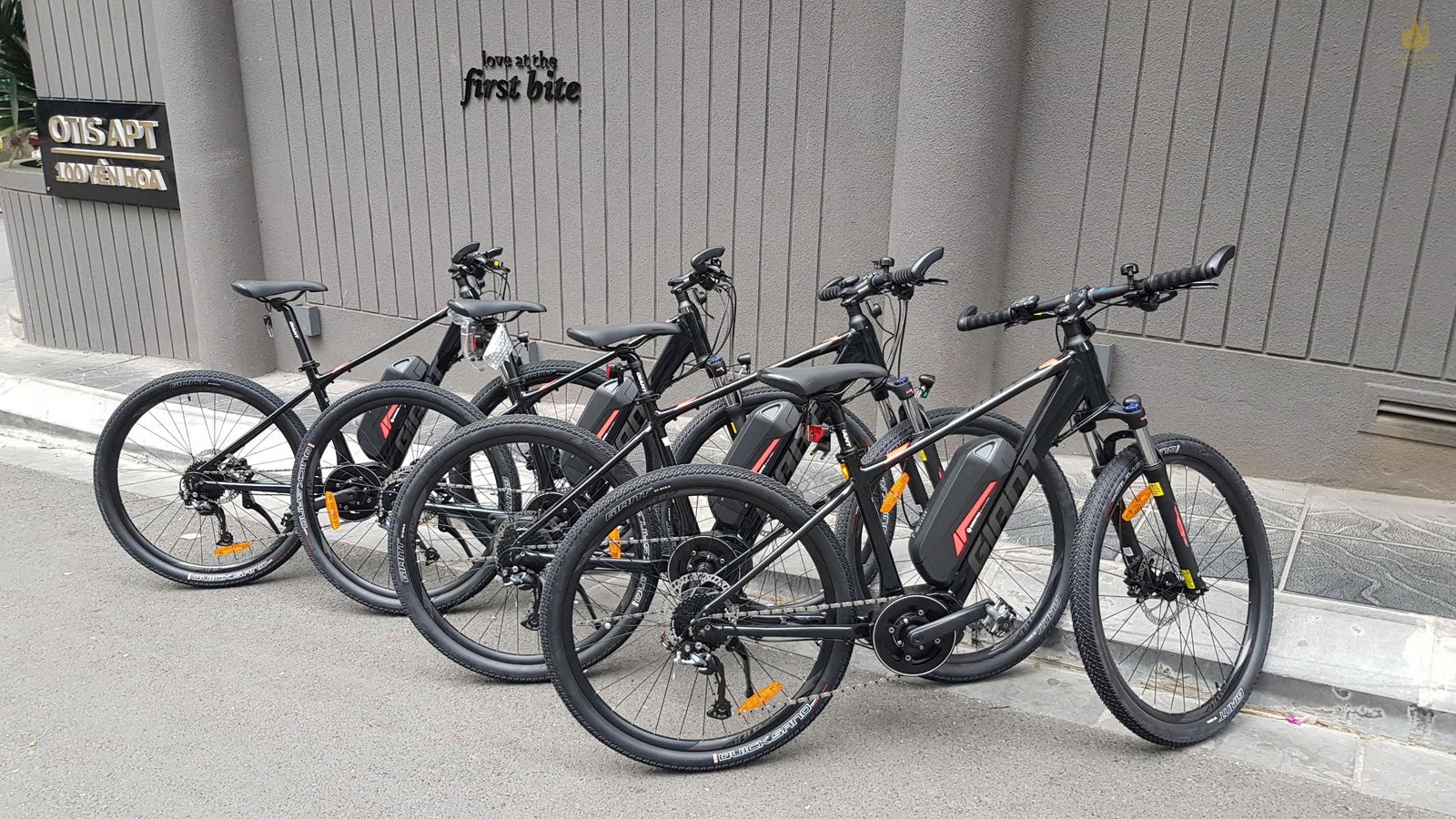
Vietnam, a country famed for its spectacular mountain passes, lush rice terraces, and complex network of historic trails, has long been a dream destination for cyclists. Yet, its challenging geography—characterized by scorching heat, punishing humidity, and immense vertical climbs—often reserves the most breathtaking routes for only the fittest elite. This barrier has now been shattered. The advent of E-Bikes Cycling Vietnam has democratized the adventure, making the country’s most remote and beautiful landscapes accessible to riders of all ages and fitness levels.
October 06, 2025
.jpg)
For the dedicated gravel cyclist, Southeast Asia represents the pinnacle of mixed-terrain exploration. While individual countries offer stunning challenges, the true masterpiece lies in combining them. The cross-border adventure spanning Gravel bike riding in Vietnam and Laos is an unparalleled journey, seamlessly blending the soaring karst mountains of Northern Vietnam with the quiet, forested plateaus and historical trails of Laos.
October 06, 2025
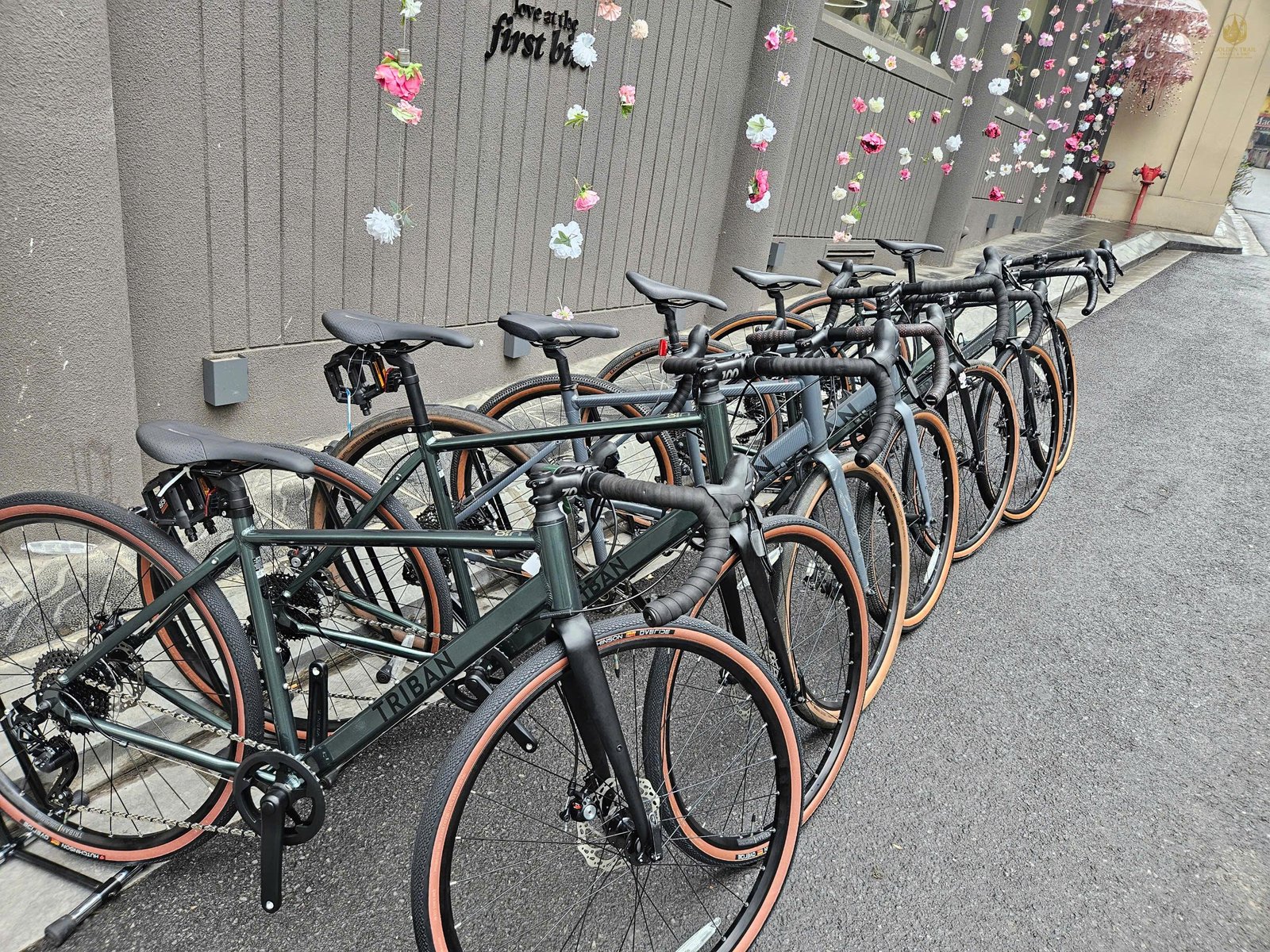
The Ho Chi Minh Trail (HCT)—Đường Trường Sơn in Vietnamese—is more than just a route; it is a legendary tapestry woven from history, endurance, and raw, untamed landscape. While many know the HCT as a symbol of wartime resilience, today it represents the ultimate pilgrimage for the modern adventurer. Forget crowded highways and tourist buses
October 06, 2025

Vietnam is not merely a destination; it is an epic, sensory overload, a land waiting to be discovered inch by inch. While motorbike journeys and bus tours follow the predictable highways, the true soul of this nation—its quiet valleys, timeless hamlets, and untamed mountains—is revealed only to those who dare to take the dirt road.
October 06, 2025

What to Bring on a Vietnam Bike Ride? It is important that the clothing you take on your cycling tour is appropriate for the trip you have chosen. There is a fine balance between taking too much and too little, especially considering that you need to equip yourself for differing levels of physical exertion and also for a range of climatic conditions.
September 09, 2025
.jpg)
Discover the magic of a Vietnam cycling holiday. Explore breathtaking landscapes, immerse yourself in local culture, and embark on an unforgettable adventure through mountains, coastlines, and deltas. Book your dream cycling trip today.
September 05, 2025
.jpg)
Embark on an unforgettable bicycle tour in Vietnam. Explore breathtaking landscapes, immerse yourself in local culture, and experience the ultimate cycling adventure through mountains, coastlines, and deltas. Book your dream bike trip today.
September 05, 2025
.jpg)
Embark on an unforgettable bike tour in Vietnam. Explore breathtaking landscapes, immerse yourself in local culture, and experience the ultimate cycling adventure through mountains, coastlines, and deltas. Book your dream bike trip today.
September 05, 2025
.jpg)
Discover the magic of a Vietnam cycling tour. Explore breathtaking landscapes, immerse yourself in local culture, and embark on an unforgettable adventure through mountains, coastlines, and deltas. Book your dream cycling trip today.
September 05, 2025
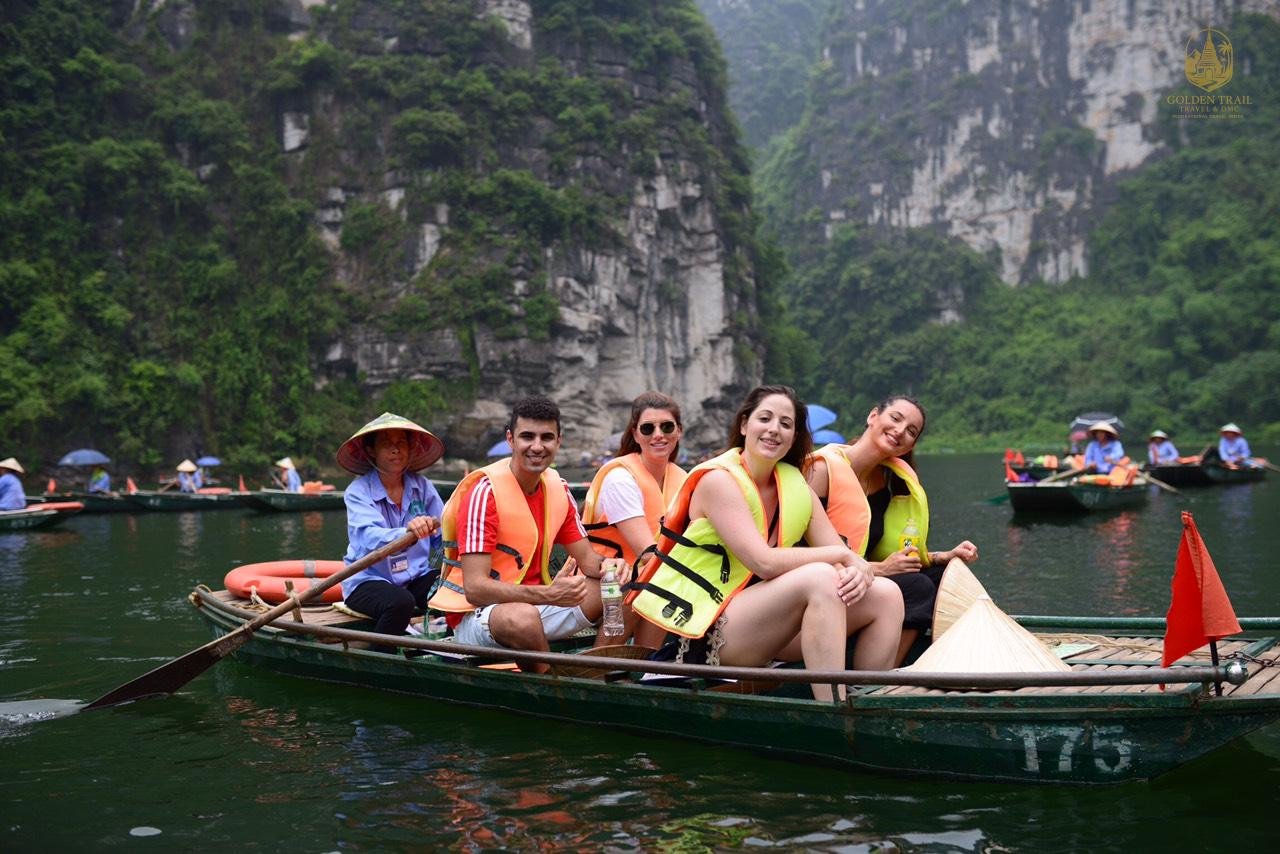
Embark on a serene Ninh Binh boat tour and discover the "Halong Bay on land." Glide through mystical caves and stunning limestone karsts in Tam Coc, Trang An, and Van Long. Book your unforgettable journey with Golden Trail Travel & DMC
August 29, 2025
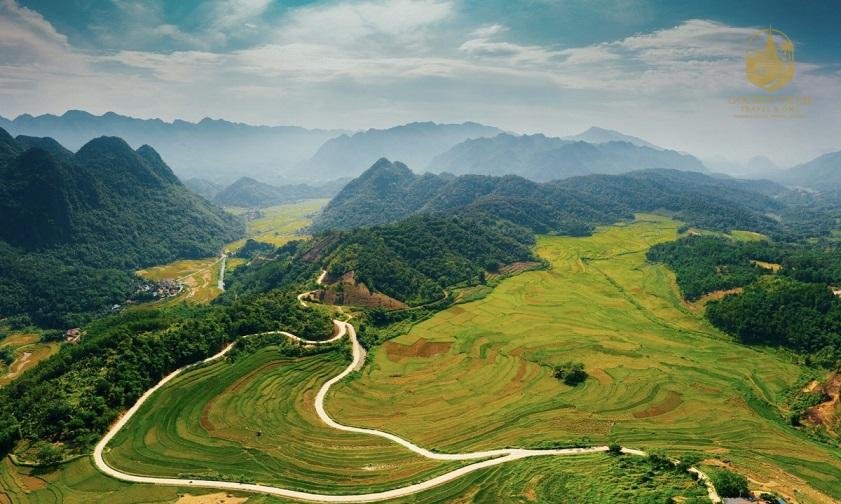
Discover the serene beauty of Pu Luong valley. Trek through lush terraced fields, experience authentic local life, and witness breathtaking landscapes. Book your Pu Luong tour with Golden Trail Travel & DMC.
August 29, 2025
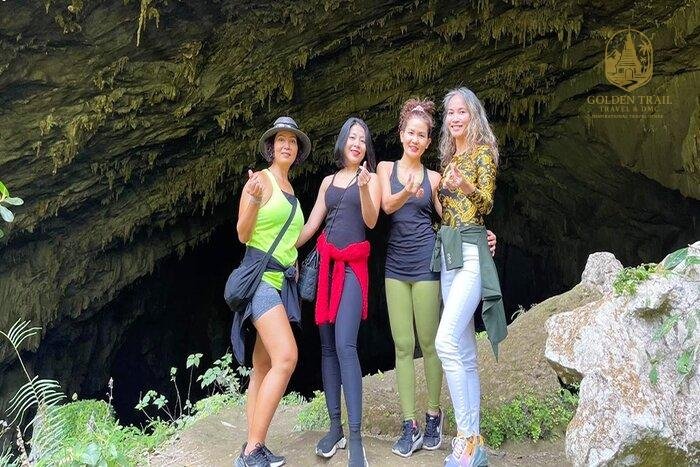
Journey into the heart of Pu Luong to Kho Muong Cave. Trek through stunning landscapes, explore a magnificent bat cave, and experience an authentic adventure. Book your tour with Golden Trail Travel & DMC.
August 29, 2025
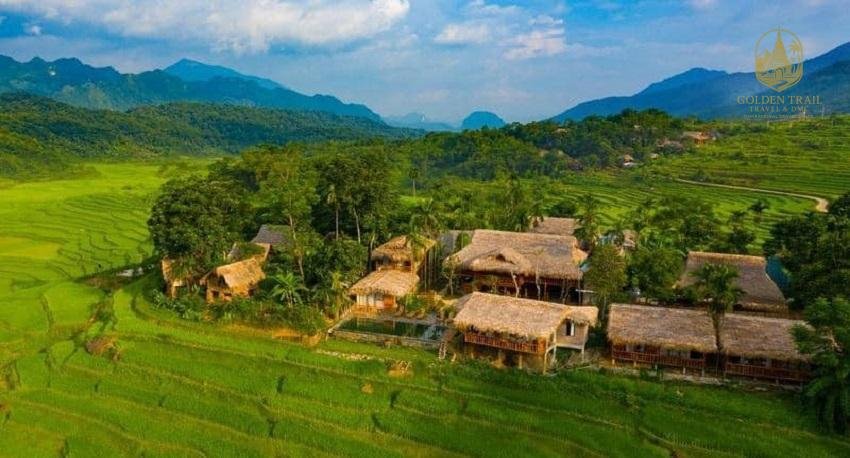
Discover the breathtaking views and authentic culture of Don village in Pu Luong. Trek to its magnificent viewpoints, experience local life, and witness stunning sunrises and sunsets. Book your tour with Golden Trail Travel & DMC.
August 29, 2025
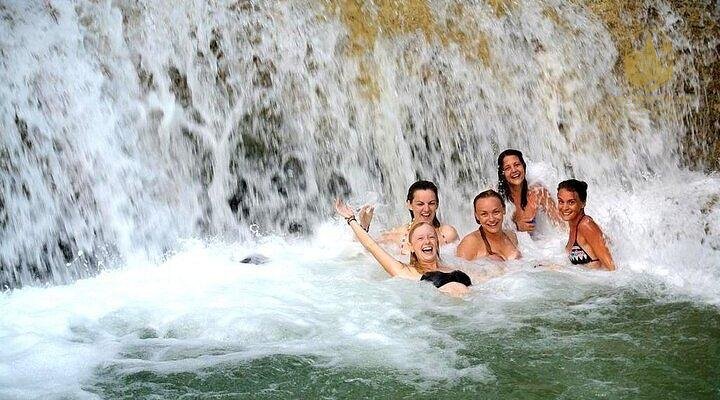
Discover the serene beauty of Hieu village & waterfall. Trek through stunning landscapes, swim in natural pools, and experience authentic local life. Book your adventure with Golden Trail Travel & DMC.
August 29, 2025

Discover the hidden gem of Kho Muong village in Pu Luong. Trek through stunning landscapes, explore a magnificent cave, and experience authentic local life. Book your adventure with Golden Trail Travel & DMC.
August 29, 2025
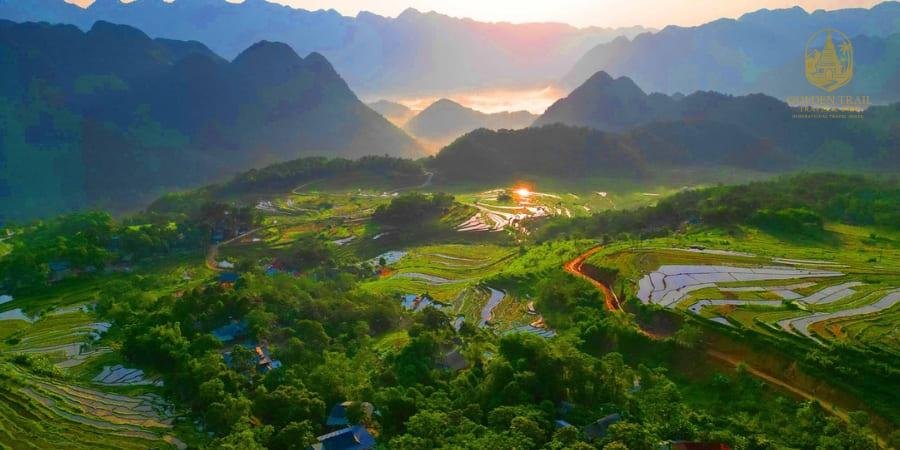
Witness the magic of a Pu Luong sunrise/sunset. Trek to the best viewpoints and experience the breathtaking colors, peace, and natural beauty. Book your Pu Luong tour with Golden Trail Travel & DMC.
August 29, 2025
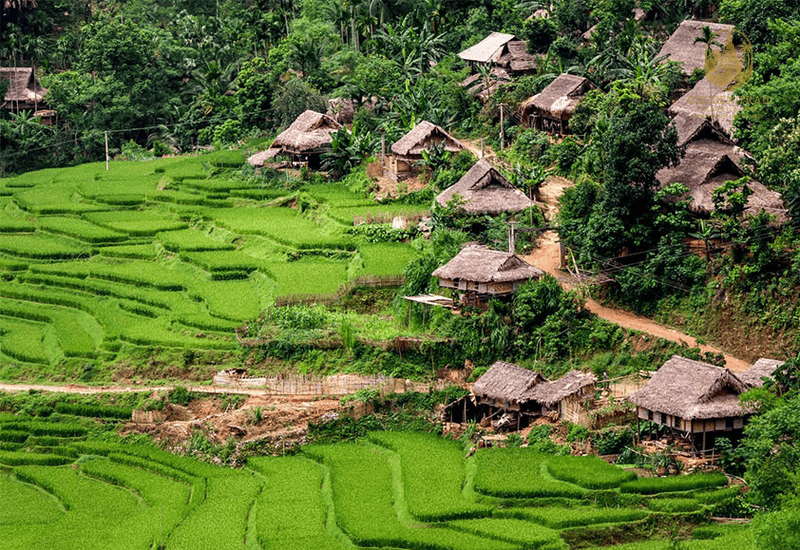
Journey into the soul of Pu Luong. Explore ethnic villages Pu Luong to experience a deep connection with local culture, life, and nature. Book an authentic tour with Golden Trail Travel & DMC.
August 29, 2025
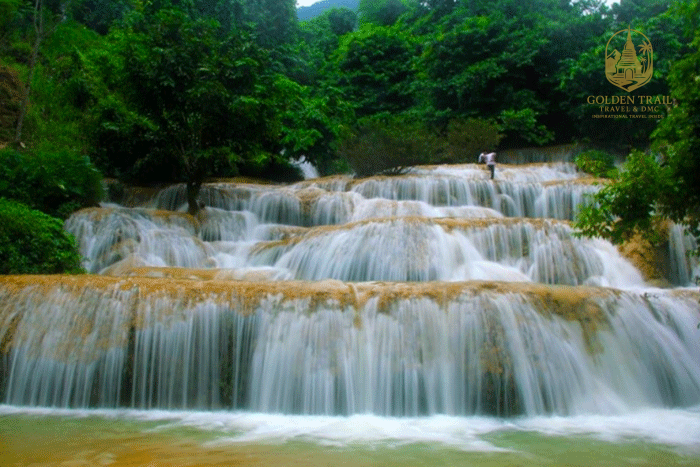
Discover the heart of Pu Luong with a trek to its majestic waterfall. Experience the ultimate journey of peace, conquest, and natural beauty. Book your Pu Luong waterfall tour with Golden Trail Travel & DMC.
August 29, 2025
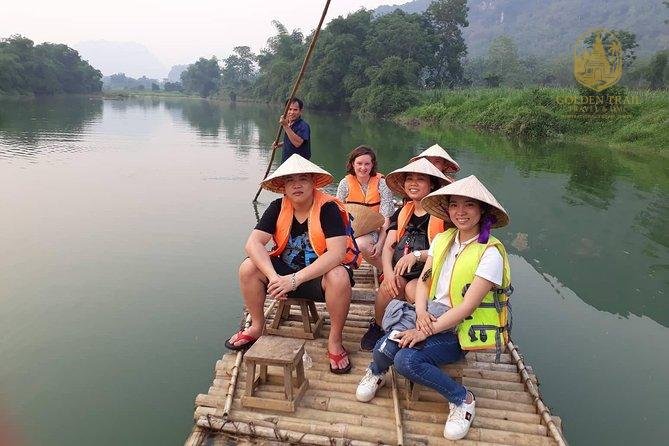
Drift into serenity with bamboo rafting Pu Luong. Discover the tranquility of the Cham Stream, iconic waterwheels, and lush landscapes. Book your unforgettable tour with Golden Trail Travel & DMC.
August 29, 2025